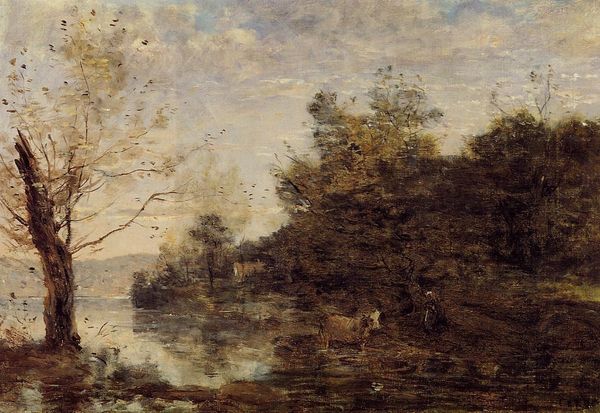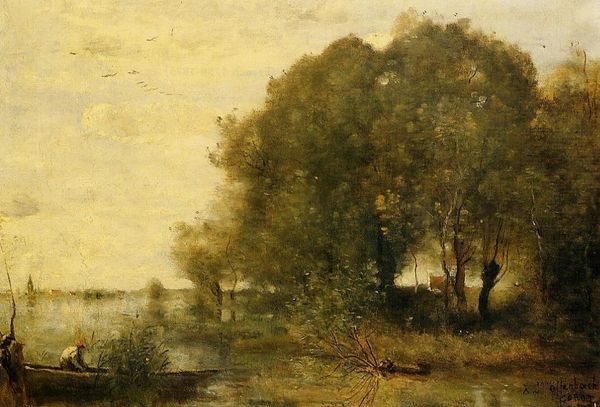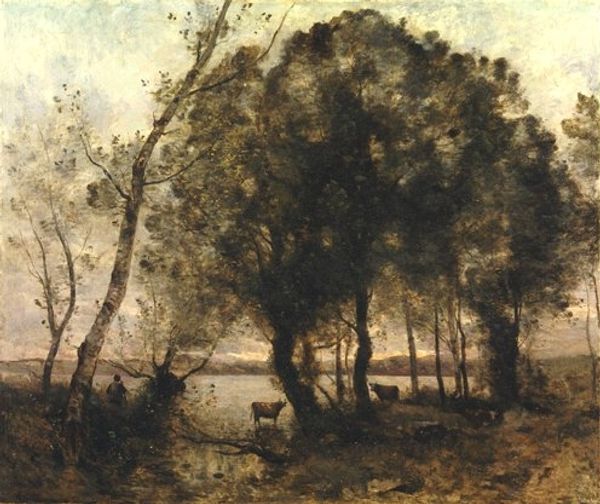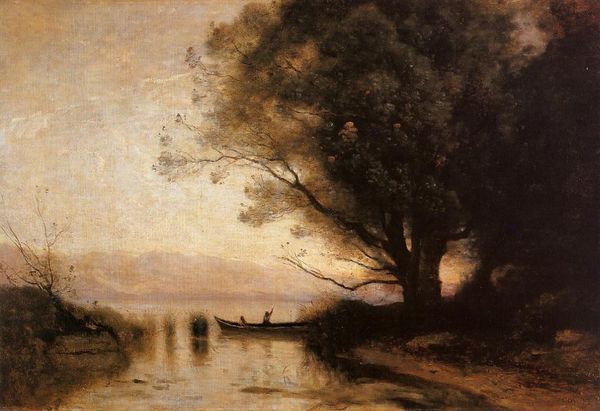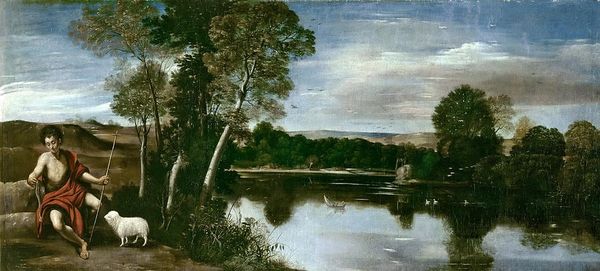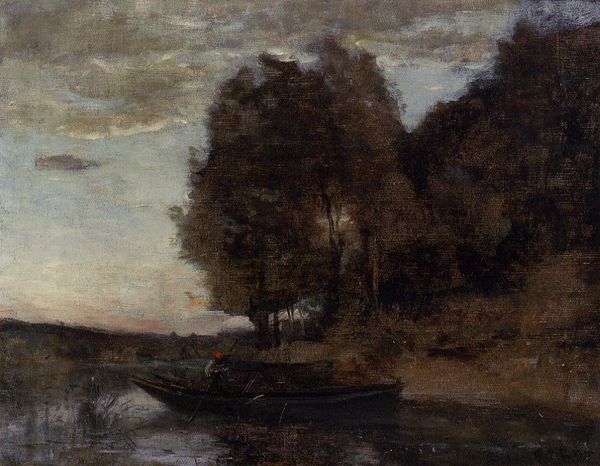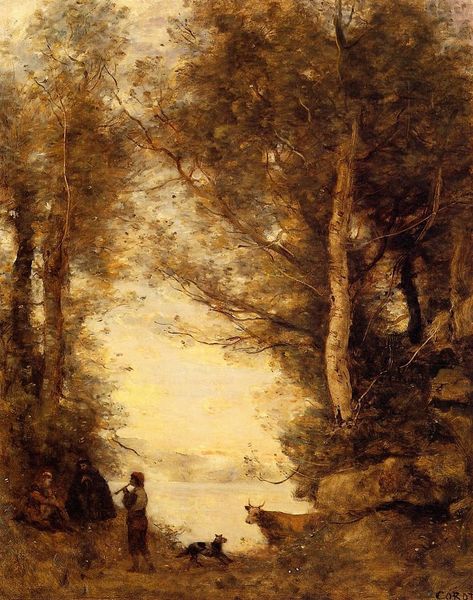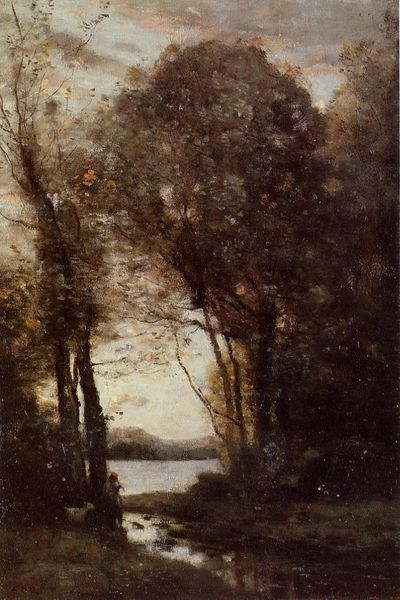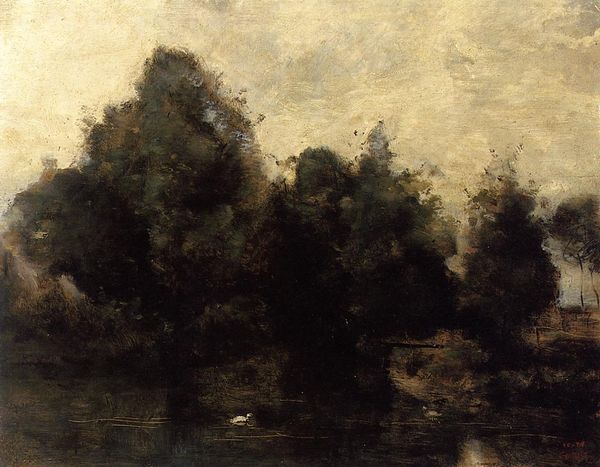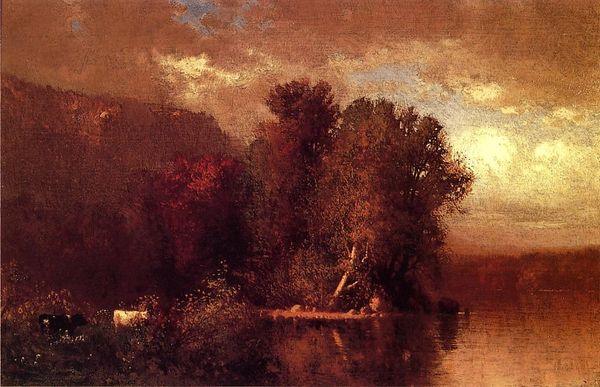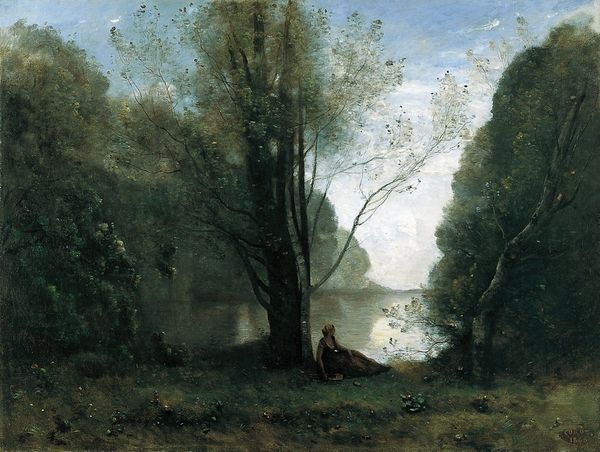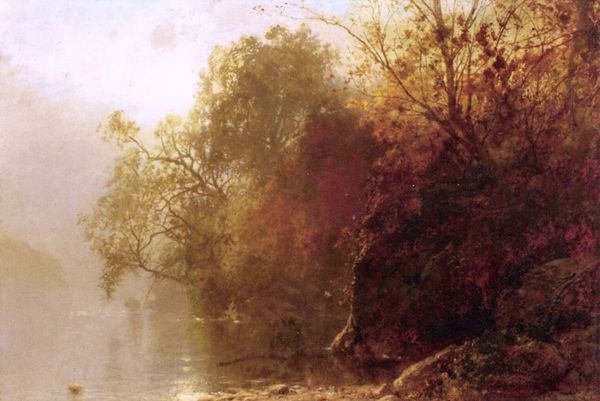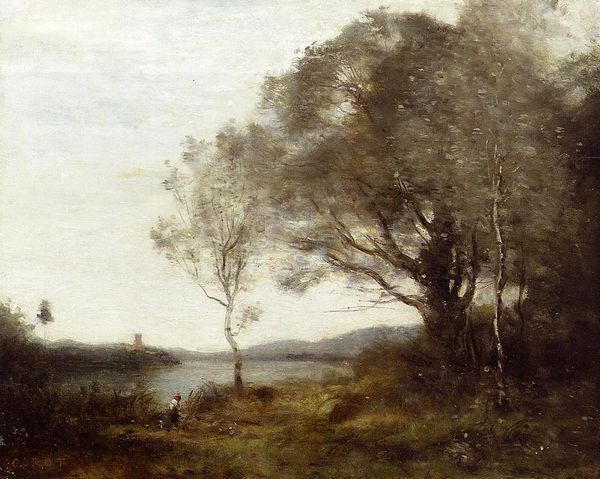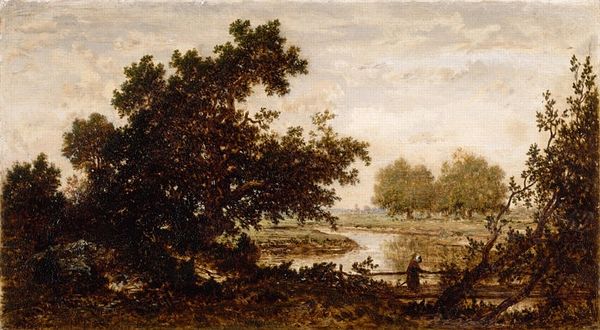
Copyright: Public domain
Curator: This is "The Boatmen of Mortefontaine" by Camille Corot, painted around 1870. The painting depicts a tranquil scene near Mortefontaine, a small community north of Paris. Editor: My first impression is one of quiet serenity. The hazy atmosphere and soft light create a dreamlike quality. It's quite Romantic, in the truest sense. Curator: Absolutely. Corot's work embodies a yearning for a simpler, idealized past. In this work, we see the influences of the Barbizon School where painting en plein air, or outdoors, was an important tenet of practice. Notice how Corot softens the sharp lines with muted tones, creating a peaceful retreat away from urban life, resonating with broader desires within the Parisian art world. Editor: The figures in the boat and on the bank—what can you tell me about them? They seem almost like archetypes, universal figures rather than specific portraits. Curator: Indeed. Corot's interest isn't really in individualized portrayal. He is interested in the play of light and the suggestion of human presence, and its integration into a landscape with water and reflections that convey calmness and an undisturbed existence. We are witnesses, not participants. It expresses universal sentiments, the solace found in nature, reflecting the shifting societal values during a time of rapid industrial growth. Editor: So, these figures are not just inhabitants of the landscape, but perhaps symbols of a more timeless connection to nature? This also touches upon a core Romantic theme: humanity dwarfed by, and finding solace in, the grandeur of nature. Curator: Exactly! The painting, executed with visible brushstrokes and subtle colour harmonies, invites introspection. It reminds viewers of nature’s enduring power and its potential to provide refuge from modern anxieties, an incredibly powerful and enduring symbol. Editor: Corot certainly captured an idyllic vision here. I find it to be less a precise representation of Mortefontaine and more an invocation of a place where harmony prevails. Thank you for drawing my attention to the painting's many historical resonances, Curator. Curator: Thank you! The way Corot balanced artistic tradition with emerging Realist approaches is a fascinating chapter in the story of modern landscape art, don’t you agree?
Comments
No comments
Be the first to comment and join the conversation on the ultimate creative platform.
